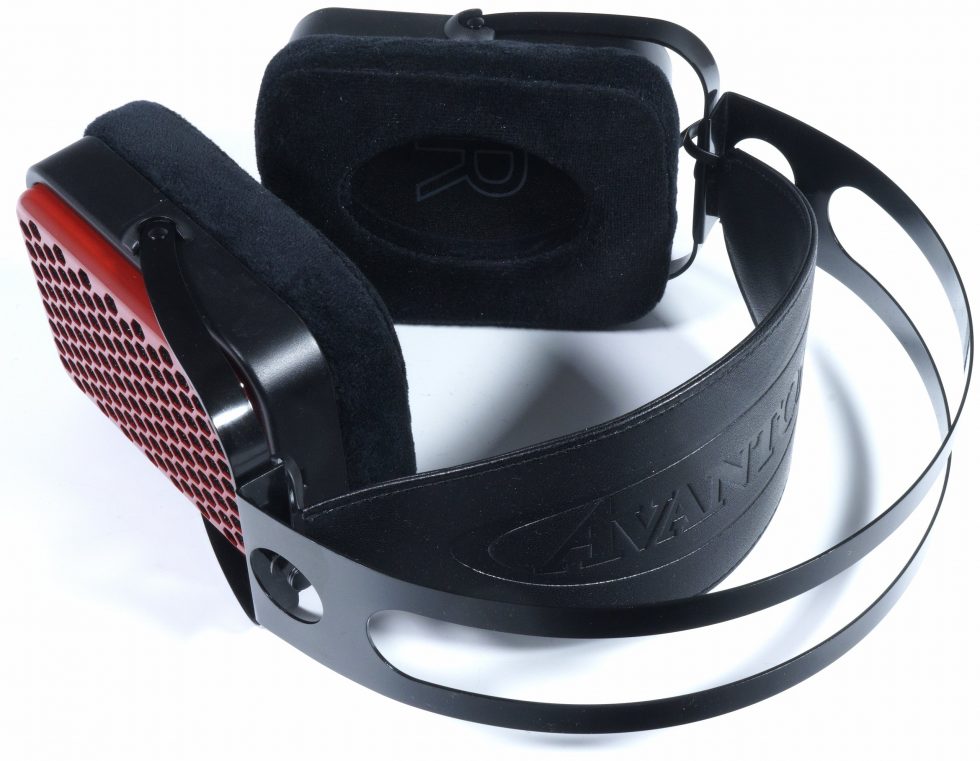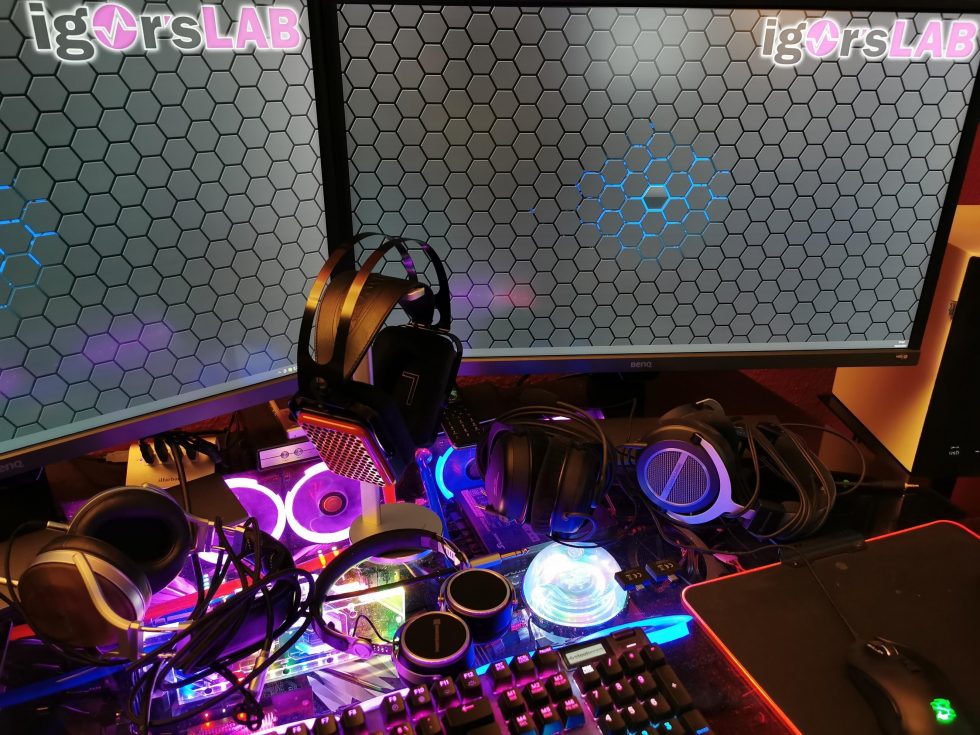Subjective listening experience
Now let’s also test subjectively what you have on your ear in the original. I have now used the Avantone Pro Planar Red privately very intensively over a period of time, which should take the wind out of the sails of even the most hardened single-player fanatics, as it adds up to well over 250 hours of operation. If you believe in that sort of thing at all. But anyway, you can check that off as done now, because it’s done, one way or the other.
Bass reproduction
The bass is extremely well structured, still deep enough for an open system and never even slightly too weak, but without being pointlessly loud or over-present. It’s just there, period. Those who love bass bombers will be disappointed, but the reproduction is so close to the original that you won’t miss anything here, but will be amazed often enough. The subcontraoctave is naturally present, although below 30 Hz the limits of the system are slowly reached and the transition to nothingness occurs smoothly. The big advantage of the rather precise and never too fat tuning is also that short and dusty as well as velvety content is reproduced equally well.
And then you are always amazed because you suddenly hear impurities in the bass that are not due to the headphones, but already due to the material, and which a normal headphone smoothly smears and thus politely covers up. The Avantone Pro Planar Red is thus not a sneaky puncher, of course, but a thoroughly honest reporter from the deep recesses of many a single player. You can like that, or rather not, at least you don’t miss anything. And it is level stable in any case, let the big bass drum come first.
This range also sounds very natural and almost too selective, which makes the reproduction of male voices in particular an experience of a different dimension. These vocals are almost unlimited in their volume and still seem very natural and almost too relaxed. Let’s call it voluminous lightness, which doesn’t have to be a contradiction, because nothing is ever even remotely cramped. The entire bass range up to the upper bass plays sovereign, rather warm and balanced, without brutally pushing away the upper mids or the treble.
What the magnetostats are really capable of is the lifelike reproduction of a very broadband sound carpet down to the finest, smallest detail, where no area tries to assassinate the other. By the way, the instruments are in no way inferior to the vocals and even when gaming you have the usual battle noise as a sufficiently fat ear stopper, even if it’s not the high-flyer here and most gamers prefer rather bass-heavy game types.
Midrange
Female vocals are in no way inferior to male vocals on the Avantone Pro Planar Red. It remains very filigree and velvety and despite the almost too analytical precision one feels a subjectively perceived warmth that is not only pleasant but also contributes to the fact that one does not give up enervated even after hours of listening. Let’s just call it a balm for the ears, because what’s on offer is right up there with the best in this price range and, purely subjectively, even beats the T1 and T5 from Beyerdynamic. While not by any stretch, it’s just more relaxed and laid back, which is saying something. The resolution is also free of any criticism.
Unlike the Tesla T1 and T5 earpieces, the Avantone Pro Planar Red is more like the Amiron Home. Cozy in balance on quieter parts, but still wide awake and never even kind of nervous. At this point, however, the Avantone Pro Planar Red lacks a bit of precision in some small frequency ranges, which makes it somewhat of a reference for the studio. For the relaxed listening pleasure this is not disturbing, but for the mixing it probably is. What excites here, though, is the explosion when things really get going. Guitar solos or a finale furioso in the big orchestra are then no cramp, but pure and sovereign. Quiet goes, loud really goes. Heavy metal with the Planar Red? Of course…
The localization is really good, even if the tuning doesn’t allow an overly wide stage. But it is and remains very natural and resembles the sensation in the concert hall. Depth gradation is also excellent, which I see as a very big plus. So you don’t sit in the orchestra, so to speak, but right behind the conductor in row one. The location of individual instruments (or sources) ends up being very clear because it is more in line with reality. For gaming, the stage is more than adequately sized and still better than almost anything you can get as a so-called gaming horns. I never really want to hear music any other way, as long as it’s not organ in the subcontraoctave. But we just had that with the bass.
Tweeter range
Annoying peaks? Wrong. This is where it gets its usual loudest, but never mushy or spiky. Did I write heavy metal above? As velvety as the parts act at low or medium levels, when it gets louder, the party really gets started just before the eardrum. Distortions or falsifications of individual parts? It’s more like the headphone amp goes to its knees, and it’s rare indeed that I’ve managed to push the A20 beyond its limits. However, with the ear pads slightly off because I didn’t want to give myself a final hearing loss. It’s not loud anymore, it’s infernal.
Business as usual. The sibilants are formed very cleanly, but without chewing your ear off. High frequency peaks or too shrill treble are not the plan of the Planar headphones. All right, blow-off noises, whooshing jazz brooms, and other sonic highs are clean, precise, and well-formed, but they stay right where you want them to be without intruding. This is quite great cinema, albeit with somewhat restrained brilliance. It almost sounds too real in places, and you’ll have to adjust quite a bit when switching from fun headphones to this tuning.
Summary
A planar headphone like the Avantone Pro Planar Red is something quite special, especially when it is an open system. The Avantone Pro Planar Red is by no means a screamer over all corners despite the stated 5 watt maximum load (which would also be possible at full level), but rather celebrates a very velvety and almost introverted way of playing in the overall impression. It’s hard to describe, but “smooth gliding” would probably be the best way to describe it. The trebles are unagitated and stable up to above the audible, but never too dominant. The midrange is really unparalleled and the bass is sufficiently well structured, but without the rebellious punch below the tonal beltline that some people like so much. In short: everything fits and nothing pinches. Well, almost nothing.
What is quite negative: such an Avantone Pro Planar Red needs a lot of power, despite the 32 Ohm impedance. Below 200 to 250 mW at the amplifier output, nothing really works in the loud passages, but the amplifier of simpler design already starts to clang, far before the Avantone Pro Planar Red even comes close to its own physical limits. That doesn’t make things any cheaper, because you should already have the right equipment in your chain. An external Asus Xonar Essence STU just about manages it, the G6 starves to death before the final chord and onboard sound… Oh, let’s just drop it. You don’t have to viciously step on people lying on the ground, that’s not proper.
Well, to buy or not to buy? You have to work that out with yourself. I had the feeling at the first test listening (after an hour of Denon before), bass and treble are missing and was a bit disappointed at first. However, if you listen longer and more closely, you’ll notice that the Denon is actually just a cheeky little intermission amusement, which of course serves its purpose brilliantly and provides the best bathtub fun. The Avantone Pro Planar Red is the acoustic opposite and rather flat as a board, but at least with a cuddly soft support. And: he can also be really bad. That’s exactly why I was happy to keep it.
Avantone Planar Red
 | siehe Shop | 445,00 €*Stand: 26.07.24 17:58 |

































28 Antworten
Kommentar
Lade neue Kommentare
Mitglied
1
Mitglied
1
Urgestein
Veteran
Neuling
1
Urgestein
Mitglied
Urgestein
Mitglied
1
Urgestein
Mitglied
Neuling
Urgestein
Veteran
Neuling
Alle Kommentare lesen unter igor´sLAB Community →